With the arrival of spring, all of Japan is covered in pink. This is because at the end of March, sakura (cherry blossoms) begin blooming! You can see the cherry tree flowers in parks and botanical gardens, around temples and shrines, on the banks of rivers, or covering mountains.
The season of the cherry tree is synonymous with new beginnings. Cherry blossom season also coincides with the start of a new school year for students, and the new fiscal year for companies. However, one of the reasons why cherry trees are so important in Japan is that cherry blossoms express life and impermanence at the same time, echoing a Buddhist philosophy that “all mundane things are transitory”: nothing lasts forever and beauty is ephemeral.
During the sakura season, you will very often hear the word hanami. Hanami literally means “to see the flowers”, but in fact, it is much more than just looking at flowers! Hanami means spending time outdoors with friends, co-workers, and family while you eat and drink amongs the beautiful blossoms. Hanami is a kind of picnic party under the sakura trees. It takes place not only during the day but also during the night, thanks to the fact that many sakura locations are illuminated in the evening.
Article Contents
The Origins of Hanami and Why It Is So Popular in Japan
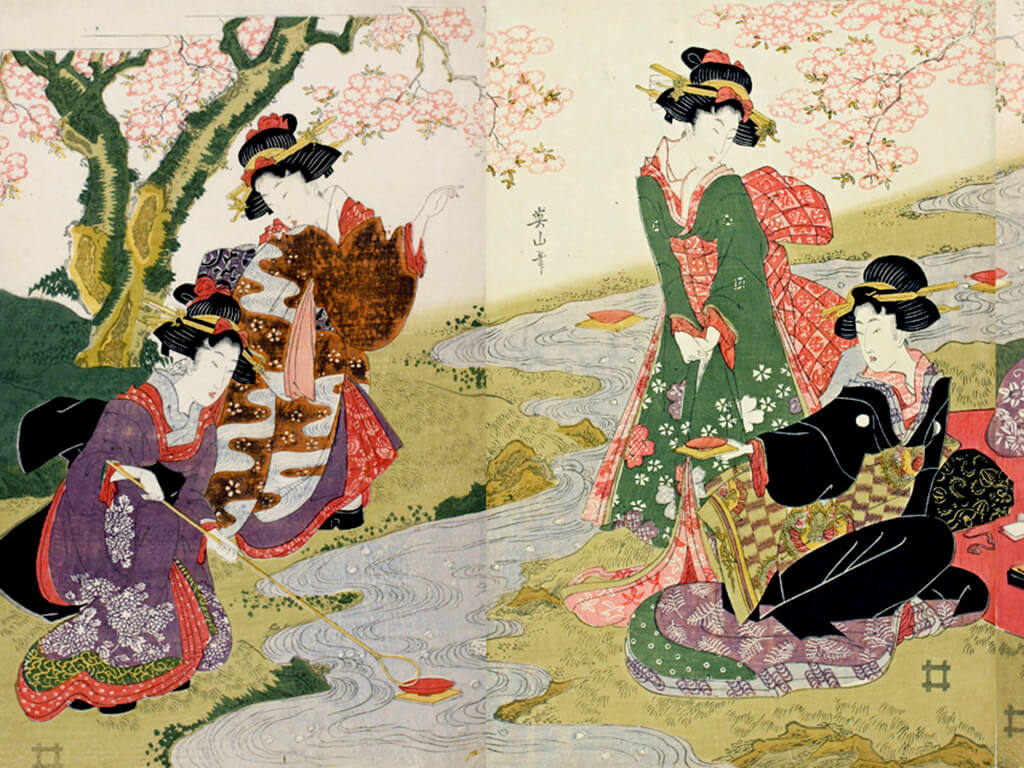
Hanami was influenced by China and the appreciation of seasonal changes. In ancient China, the Chinese were particularly in love with the fragrant plum blossoms, a flower that represents purity and elegance, and reflects the qualities of constancy and resistance against adversity.
In Japan, during the Nara period (710 to 784) aristocrats used to read Chinese poems celebrating the passing beauty of plum blossoms. In the gardens of the Imperial Court, the most common flowers were wisteria flowers, plum blossoms, peach blossoms and cherry blossoms. The cherry blossoms were appreciated for their brief but brilliant flowering. With every flowering, parties were held that included poetry, calligraphy, flower arrangement as a celebration of the arts.
It was not until the Heian Period (794 to 1185) that the term hanami became synonymous with cherry blossoms.
During the Sengoku Period (1467 to 1615), the warlord Toyotomi Hideyoshi, who briefly unified Japan, promoted the cultural practices of the court among the samurai class. At that time, hanami was still a custom limited to the elite and was inaccessible to ordinary people.
During the Edo Period (1603 to 1867), the Tokugawa Shogunate took things a step further. They ordered the planting of cherry trees in public parks, temples and shrines. This was soon imitated by different lords around the country, thus propagating the concept of public observation spaces for cherry blossoms, finally bringing hanami to the commoners.
It is said that the night observation of cherry blossoms arose in the red-light district of Yoshiwara, in Tokyo. The establishments of this district, which remained open until late at night, used paper lanterns to make themselves more attractive in the evening, especially during the cherry blossom season.
The Best Places To Enjoy Cherry Blossoms in Nagoya
If you are traveling through the Aichi Prefecture, here is a list of the best places in Nagoya and the greater Aichi area where you can enjoy cherry blossoms.
1. Nagoya Castle
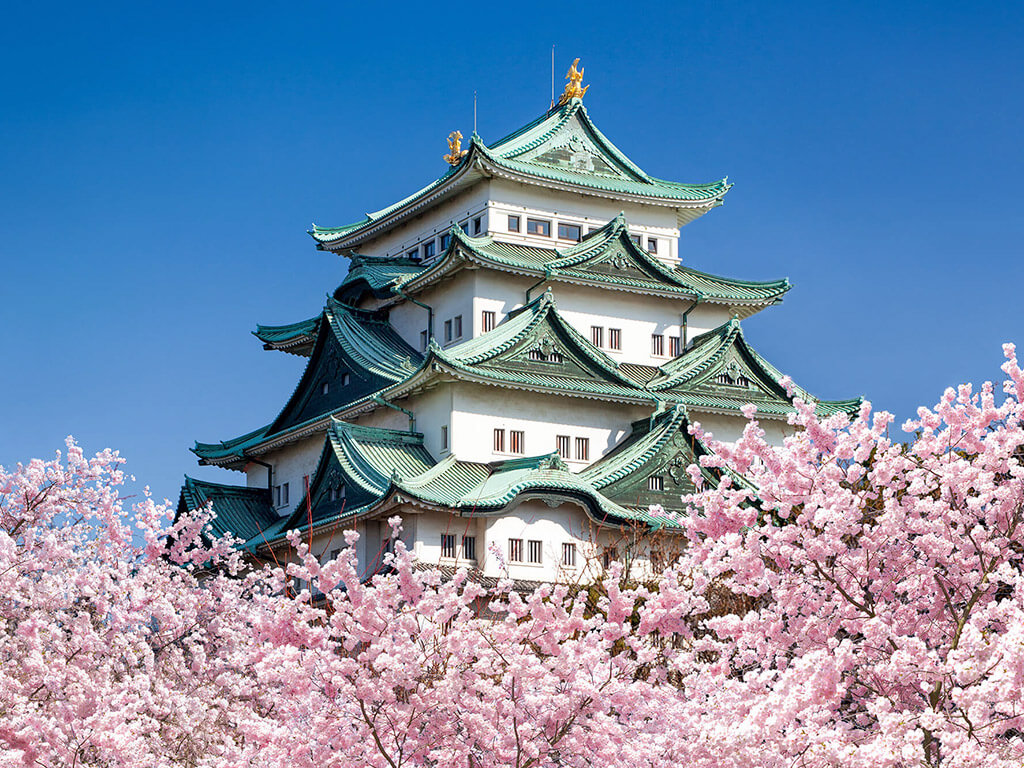
Nagoya Castle is one of the most popular tourist areas of Nagoya. In its surroundings, there are around 1,000 cherry trees comprising 10 different varieties, such as the very popular Yoshino and Shidare varieties. The views of the cherry blossoms from the castle are an impressive landscape that can only be seen in spring.
The castle holds its yearly Spring Festival from March 20rd to April 6th, 2025 with extended opening hours until 20:00 and a light-up event illuminating the pink cherry blossoms and the castle, creating a magnificent view.
During the event period, other attractions open on the grounds of Nagoya Castle, such as the Shachihokodo where a variety of local Nagoya-style food and drink are sold. A section for festival games is set up where you can try your hands at Japanese games.
Nagoya Castle (名古屋城)
Best Time: From the end of March to the beginning of April
Number of Sakura trees: ~1,000
Light up: 18:00 – 20:00
Entry Fee: Adults 500 yen, children under 12 years free
Opening Hours: 9:00 – 16:30 (extended until 20:00 during event period)
Address: 1-1 Honmaru, Naka Ward, Nagoya, Aichi 460-0031
Website | Google Maps
2. Meijo Park
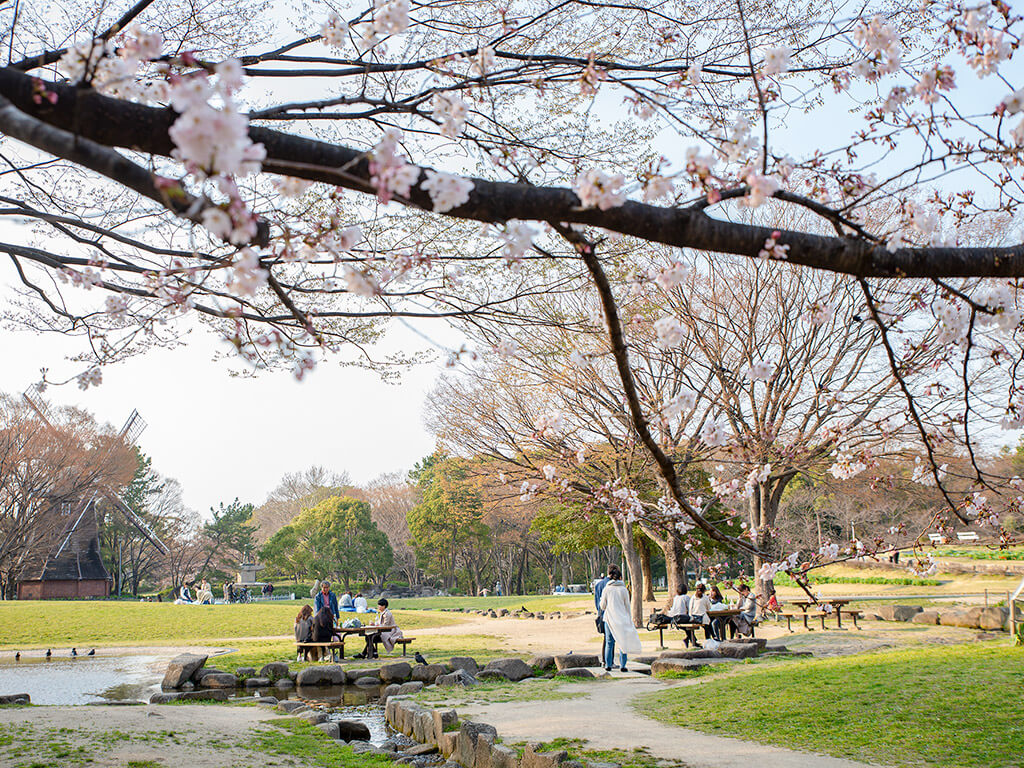
Meijo Park is a large park adjacent to Nagoya Castle. You can walk through the park while enjoying the majestic views of Nagoya Castle, and have a picnic under the cherry trees with your friends and family.
Meijo Park (名城公園)
Best Time: From the end of March to the beginning of April
Number of Sakura trees: 200 approx.
Light Up: No
Entry Fee: Free
Opening Hours: 24 hours
Address: 1 Chome-2 Meijo, Kita Ward, Nagoya, Aichi 462-0846
Website (Japanese only) | Google Maps
3. Tsuruma Park
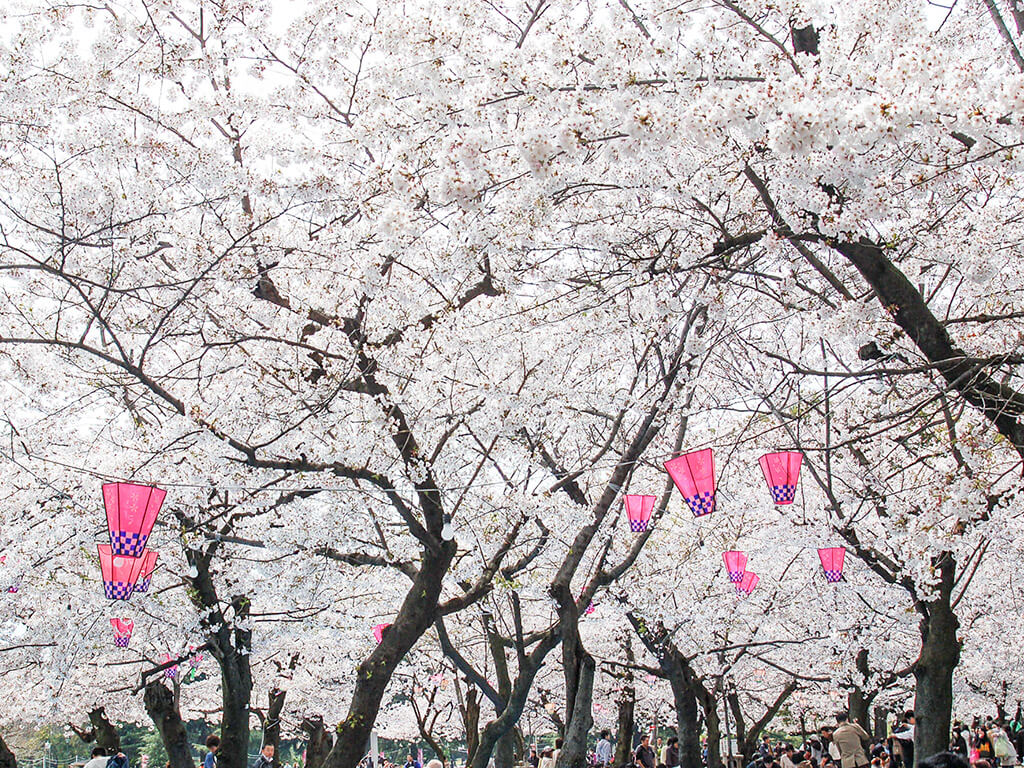
With around 750 cherry trees, it’s one of the best places to see cherry blossoms and enjoy hanami parties in Nagoya. During the spring, with the sakura blooming, it becomes a beautiful white and pink landscape that draws locals and tourists en masse. At night, the lanterns light up around the trees turning the park into a magical place. There are also food stalls, as well as different musical and cultural events.
Tsuruma Park(鶴舞公園)
Best Time: From the end of March to the beginning of April
Number of Sakura trees: 750 approx.
Light Up: March 20 to April 6, 2025 (Sunday), 18:00-22:00
Entry Fee: Free
Opening Hours: Open 24 hours
Address: 1-1 Tsurumai, Showa Ward, Nagoya, Aichi 466-0064
Access: Take the Tsurumai subway line, or the JR Chuo train line. 1-minute walk from Tsurumai station.
Website (Japanese Only) | Google Maps
After enjoying your Hanami at Tsuruma Park, how about heading to nearby Osu Kannon and joining our Street Food Walking Tour of Osu? Book Now here!
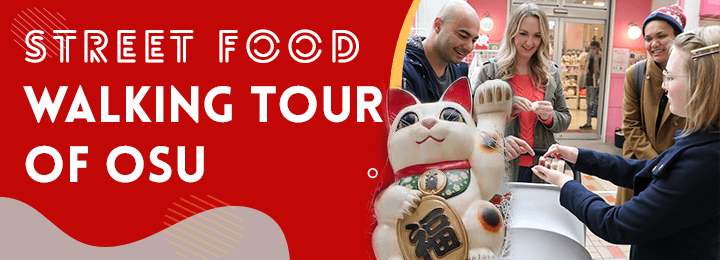
4. Yamazaki River Four Seasons Road
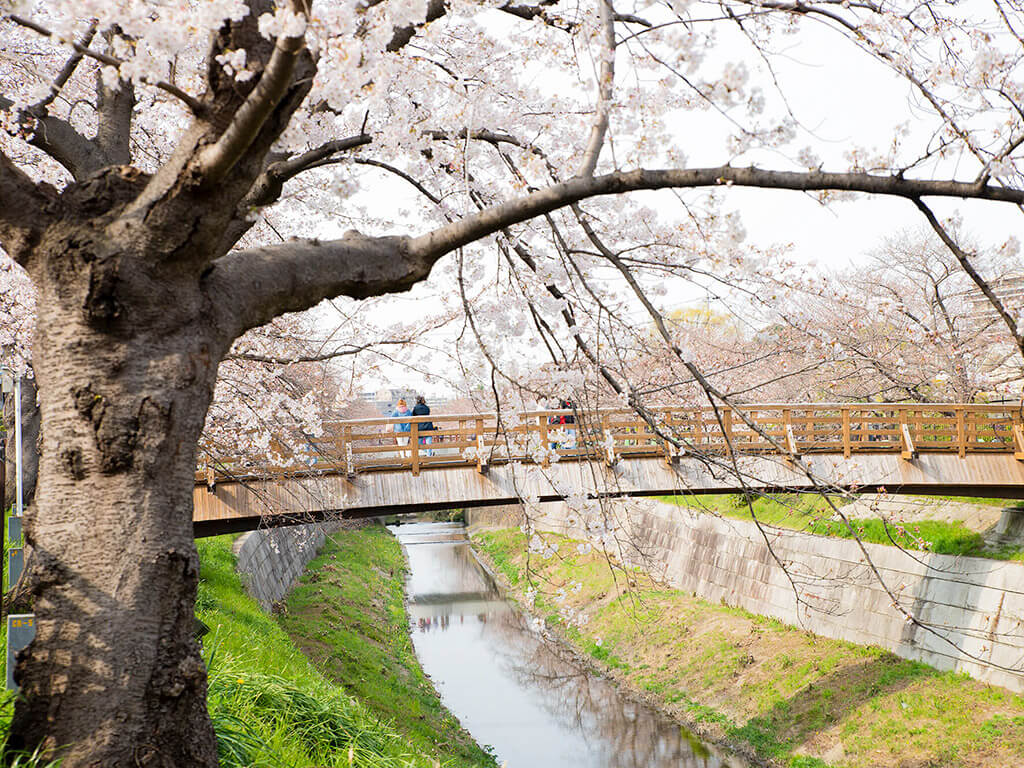
Along the Yamazaki River, you will find another of the best places to see the cherry blossoms in Nagoya. The Yamazaki River Four Seasons Road stretches approximately 2.5 kilometers and boasts over 600 Yoshino cherry blossoms. While the cherry blossoms were planted in the 1920s, the promenade itself wasn’t built until 1987, as a way to make the area enjoyable year-round. The promenade is divided by bridges into separate sections (spring, summer, and autumn areas) that promote the flowers from each respective season.
Yamazaki River Four Seasons Road (山崎川四季の道)
Best Time: From the end of March to the beginning of April
Number of Sakura trees: 600 approx.
Entry Fee: Free
Opening Hours: Open 24 hours
Address: 2 Chome Murakamicho, Mizuho Ward, Nagoya, Aichi 467-0008
Google Maps
5. Arakogawa Park
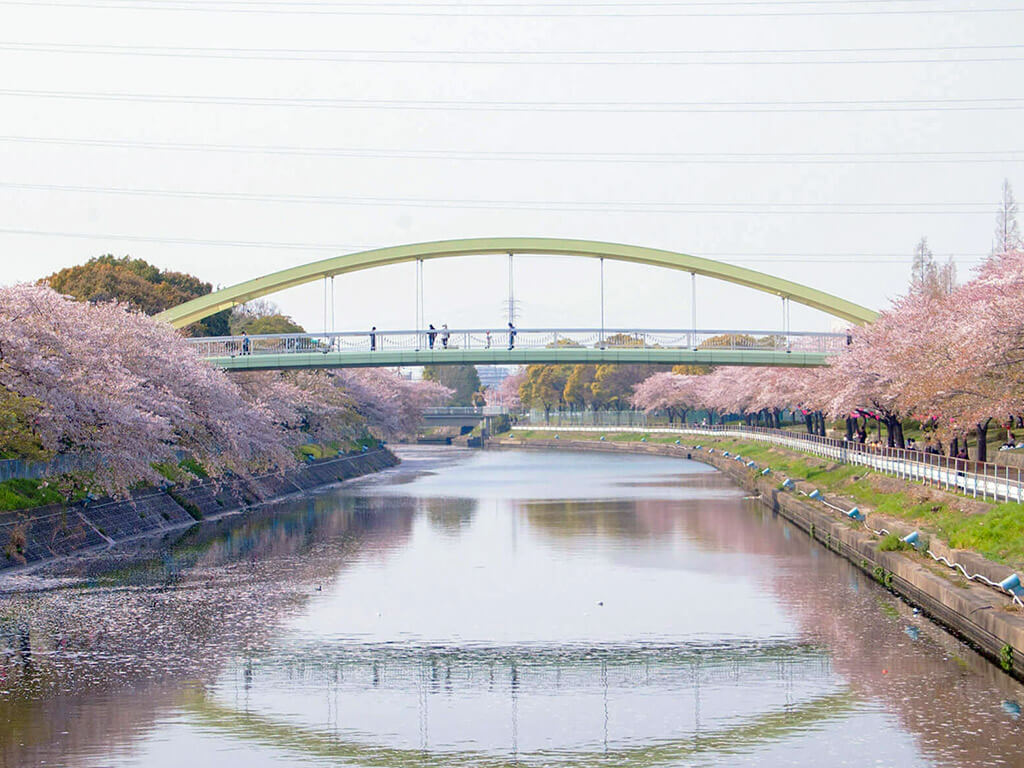
In this park, there are around 1000 cherry trees on both sides of the Arakogawa River. The park extends roughly 2.5 km along the river, making it perfect for peacefully enjoying the sakura in Nagoya.
Moreover, the park grounds include multiple recreation areas, a park for the little ones, a barbecue area, a Japanese garden, and a tea room. Arakogawa Park is also famous for its 3,000 square meter lavender field that blooms in summer.
Arakogawa Park (荒子川公園)
Best Time: From the end of March to the beginning of April
Number of Sakura trees: ~1,000
Entry Fee: Free
Opening Hours: Open 24 hours
Address: 2 Chome-52 Shinagawacho, Minato Ward, Nagoya, Aichi 455-0055
Access: Take the Aonami line to the Arakogawakoen station. The park begins right behind the station.
Website (Japanese only) | Google Maps
6. Higashiyama Zoo and Botanical Gardens
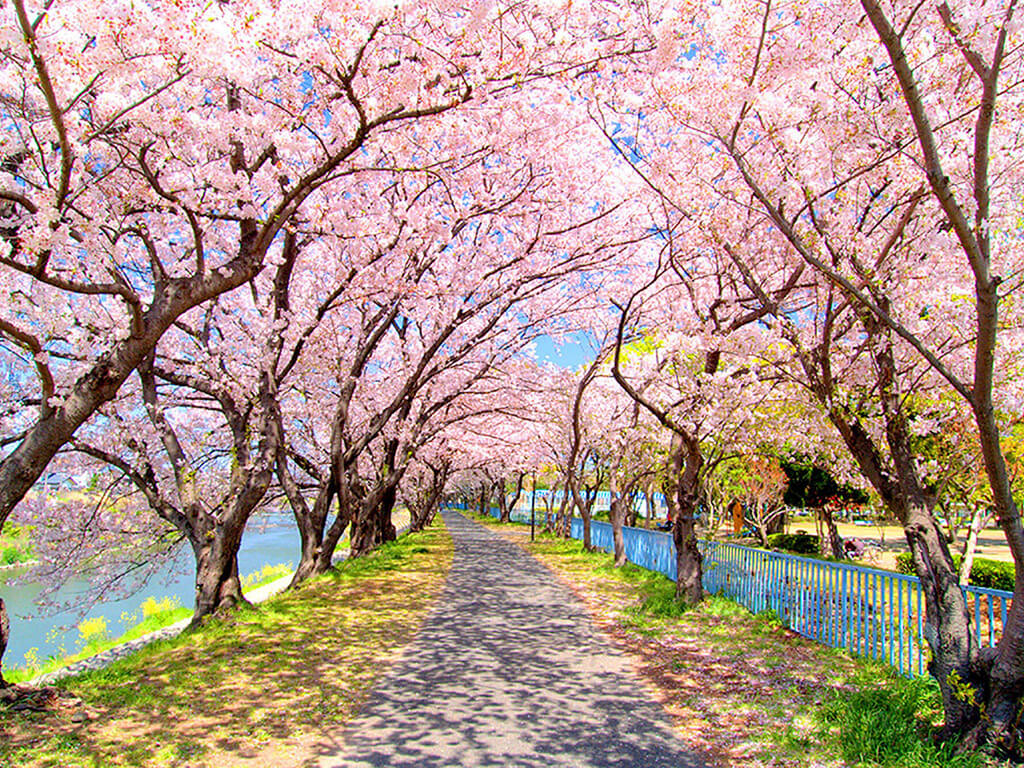
The Higashiyama Zoo houses more than 550 species of animals, including elephants, penguins, bears, tigers, giraffes, birds, reptiles, hippos, monkeys, lions, skunks, rhinos, and seals.
Next to the zoo, the oldest greenhouse in Japan houses more than 7,000 varieties of plants, making it one of the most complete botanical gardens in Asia. The Botanical Garden also houses about 1000 cherry trees of a staggering 100 different species.
Higashiyama Zoo and Botanical Gardens (名古屋市東山動植物園)
Best Time: From early March to the end of April
Number of Sakura trees: 1,000 approx.
Light Up: April 4th to April 13th, 2024, from 18:00 until 20:30 (last admission at 20:00). Closed April 7.
Entry Fee: 500 yen per person
Opening Hours: 9:00 – 16:30 (hours extended during the light-up event). Closed on Mondays.
Address: 3-70 Motomachi, Higashiyama, Chikusa-ku, Nagoya, Aichi 464-0804
Access: Take the Higashiyama subway line and get off at Higashiyamakoen station. Take exit 3. From there it is a 7-minute walk.
Website | Google Maps
7. Togokusan Fruits Park
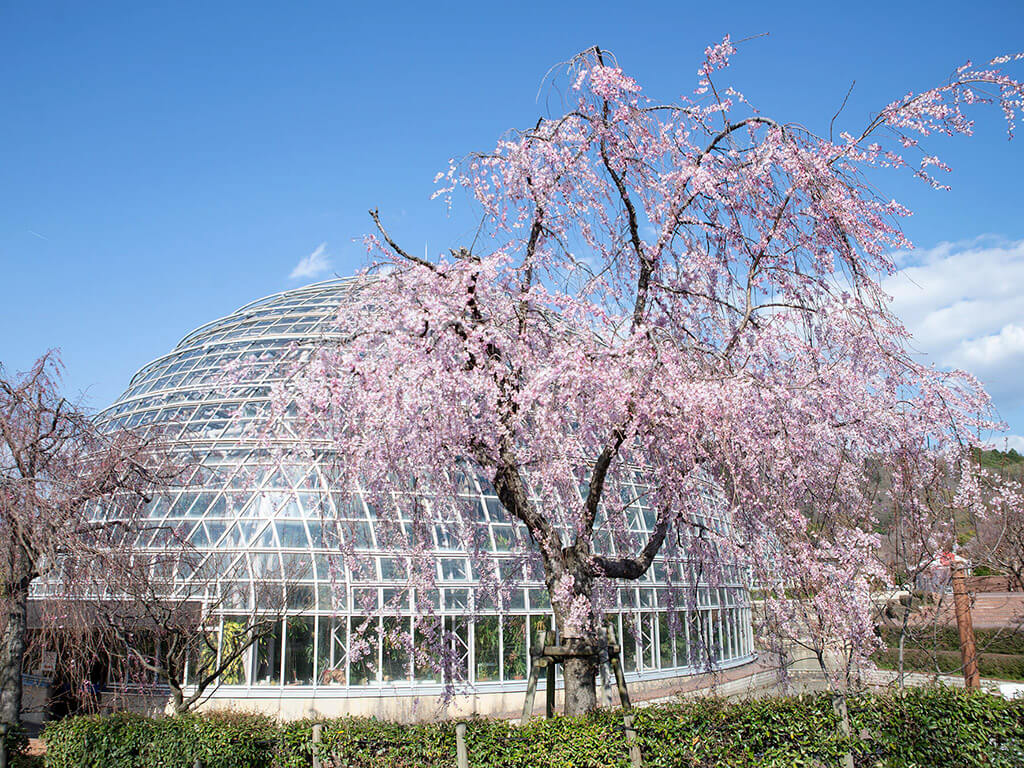
The Togokusan Fruits Park is located below the Togokusan Mountain. The park has several facilities such as an orchard with around 15 varieties of fruit plants and a tropical fruit greenhouse with around 100 types of rare fruits. Inside the park, there are around 1,000 weeping cherry trees (Yaebeni Shidare), famous for their beautiful pink flowers.
Togokusan Fruits Park (東谷山フルーツパーク)
Best Time: From the beginning of April to mid-April
Number of Sakura trees: 1,000 approx.
Light Up: No
Entry Fee: Free
Opening Hours: 9:00 – 16:30. Closed on Mondays
Address: Togoku-2110 Kamishidami, Moriyama Ward, Nagoya, Aichi 463-0001
Access: Take the JR Chuo train line and get off at Kozoji Temple Station. Take the south exit and from there, it’s a 25-minute walk.
Website | Google Maps
Best Places to See Cherry Blossoms in Aichi Prefecture
Outside of Nagoya every city and town in Aichi has spots where you can enjoy the cherry blossom season. Here are our top picks.
1. Gojo River (Iwakura)
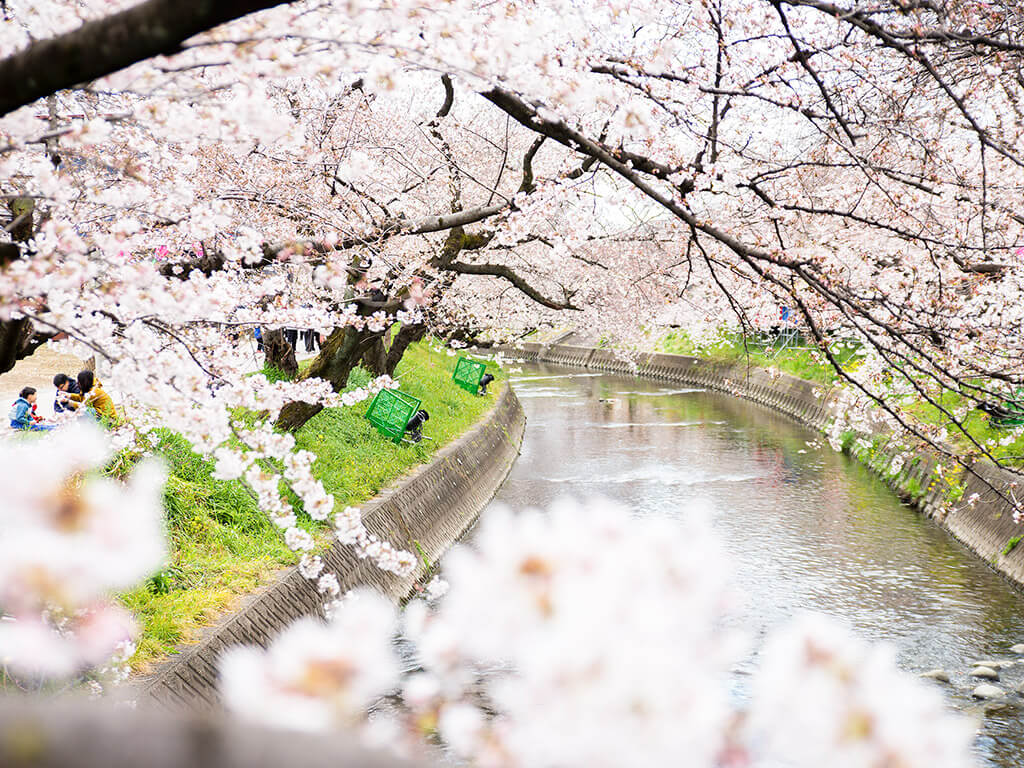
Around 1,400 cherry trees bloom along both banks of the Gojo River, which runs through the center of the city of Iwakura. With a length of approximately 7.6 km, you can enjoy the view of the rows of sakura trees that line the river, as well as the views from the bridges from where the blossoming trees are reflected in the water. On both banks, there are numerous food stalls and recreation areas.
During the sakura festival, one of the oldest traditions of the area called nonbori arai (flag washing) takes place. This is an old method of dyeing koinobori flags that consists of washing off the glue used to isolate parts of the fabric that should not come into contact with the pigments. Koinobori are carp streamers flown from the end of April to the beginning of May in celebration of Children’s Day.
This tradition is one of the cultural legacies of Iwakura, and when it takes place during the sakura festival, a large number of visitors gather to enjoy the picturesque views of the artisans working on the river.
Gojo River (五条川)
Best Time: From the end of March to the beginning of April
Number of Sakura trees: 1,400 approx.
Light Up: March 28th to April 6th, 2025, from 18:00 to 20:30.
Entry Fee: Free
Opening Hours: Open 24 hours
Address: Shinkoji-162-16 Shimohonmachi, Iwakura, Aichi 482-0005
Access: Take the Meitetsu Inuyama line to Iwakura station. From there you can walk to the river in 5 minutes.
Website | Google Maps
2. Inuyama Castle (Inuyama)
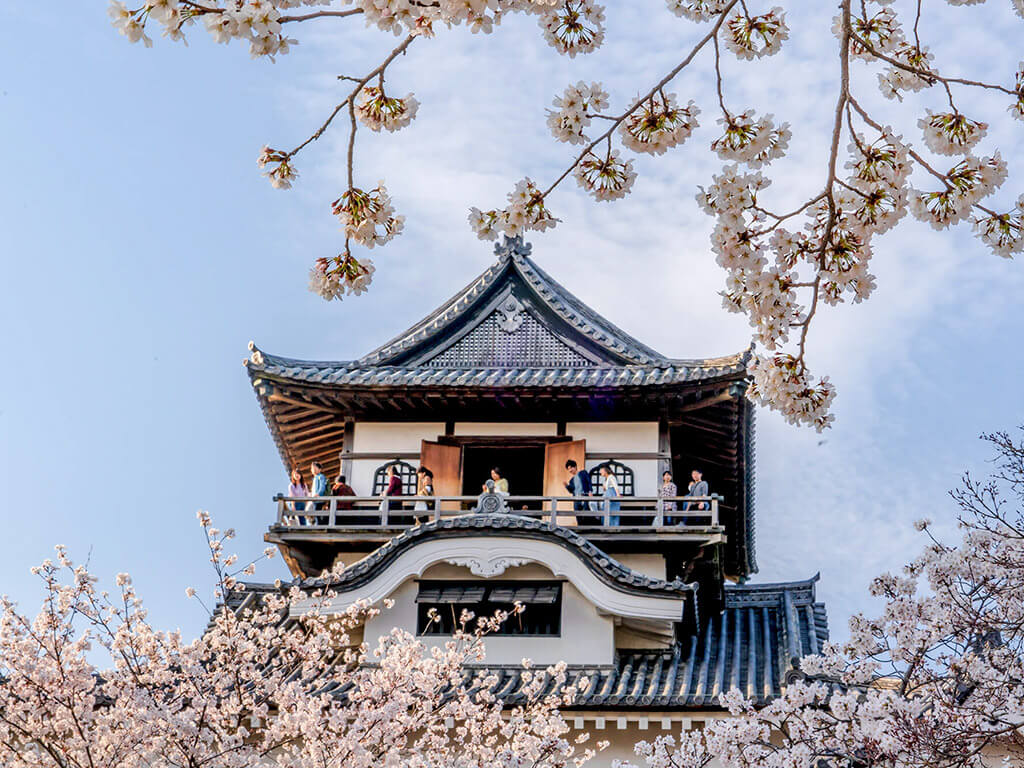
Built in the 16th century, Inuyama Castle is one of only 12 original castles in Japan. It is also one of only 5 that are designated as a Japanese National Treasure. From the castle and its gardens, you can see the Kiso River, a river that separates the prefectures of Aichi and Gifu.
Around 400 cherry blossoms bloom along the banks of the Kiso River. In addition to walking along the river, you can also enjoy the cherry trees from the river with a 40-minute sightseeing cruise. The Yuransen Sightseeing Boat allows you to enjoy the views of the cherry blossoms and the Inuyama Castle from the river. (30 minutes Adults 1,000 yen, 11 and younger 500 yen).
Inuyama Castle (犬山城)
Best Time: From the end of March to the beginning of April
Number of Sakura trees: 400 approx.
Light Up: No
Entry Fee: Adults 550 yen; Children under 14 years old 110 yen
Opening Hours: 9:00 – 17:00
Address: Kitakoken-65-2 Inuyama, Aichi 484-0082
Access: Take the Meitetsu train line to Inuyama station. From there it is a 20-minute walk.
Website | Google Maps
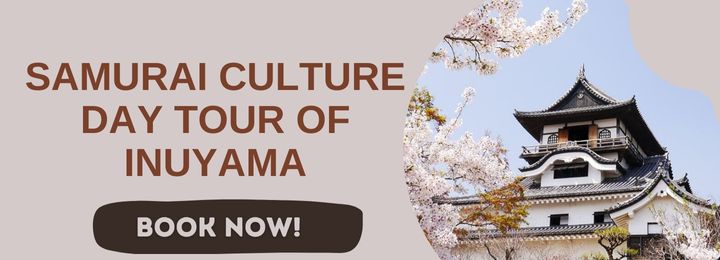
3. Meiji Mura (Inuyama)
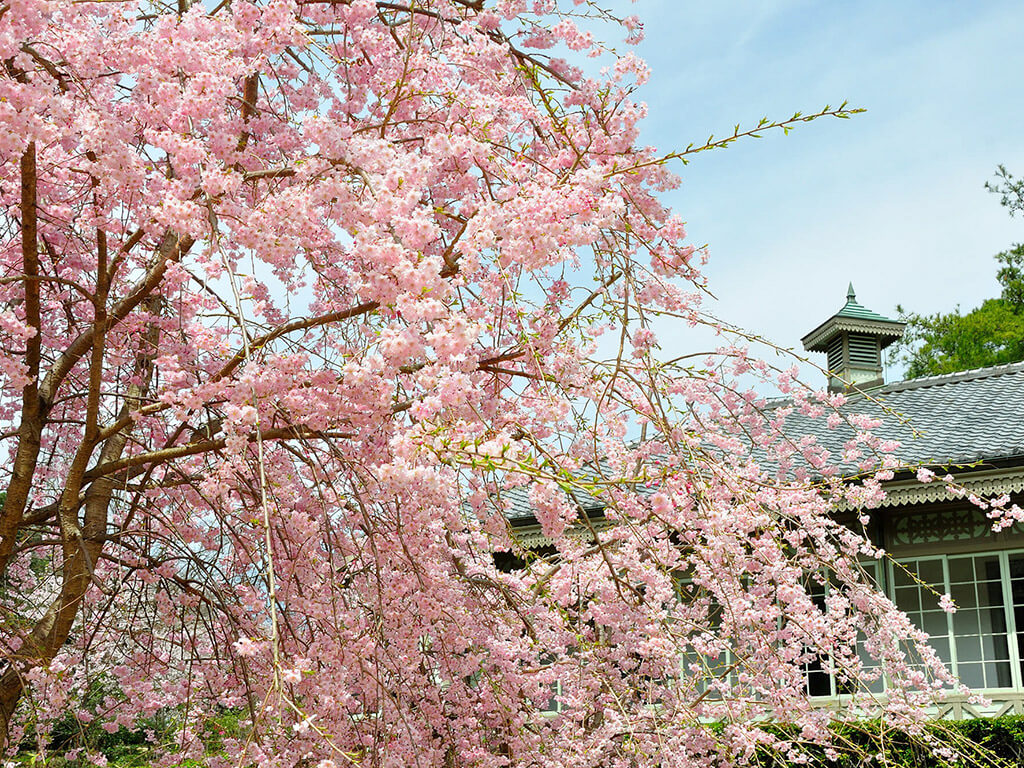
The Meiji Mura Museum is an open-air museum of buildings from the Meiji Period (1868 to 1912), a period when the foundations of modern Japan were laid and buildings were heavily influenced by architecture from the West. Within the one million square meter grounds there are more than 60 culturally important buildings, including important nationally designated cultural properties. All buildings were deconstructed, moved to the park, and faithfully reconstructed.
Meiji Mura has around 1000 cherry trees and is a popular area chosen by cosplayers to be photographed during the Sakura season.
Meiji Mura Museum (博物館明治村)
Best Time: From the end of March to the middle of April
Number of Sakura trees: 1,000 approx.
Light Up: No
Entry Fee: Adults 2000 yen, elementary school children 700 yen
Opening Hours: 9:00 – 17:00
Address: 1 Uchiyama, Inuyama, Aichi 484-0000
Access: Take the Meitetsu Inuyama line to Inuyama station. Outside the East Exit is a bus stop for the Meitetsu Bus to Meiji Mura.
Website | Google Maps
4. Kijo Park (Kariya)
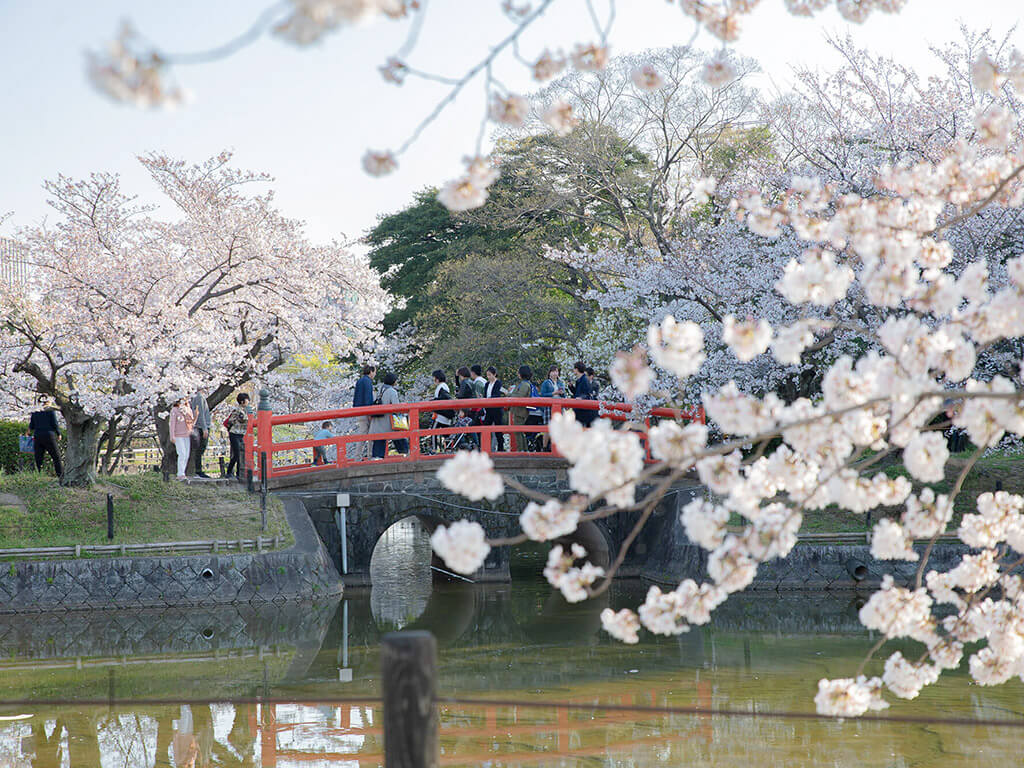
Kijo Park, close to the ruins of Kariya Castle, is one of the best places in the city of Kariya to see cherry blossoms. Over 400 cherry blossom trees are planted around the park. Additionally, the park itself features a small pond which makes a great backdrop for your cherry blossom photos.
Kijo Park (亀城公園)
Best Time: From the end of March to the beginning of April
Number of Sakura trees: 400 approx.
Light Up: March 25rd to April 6th, 2025; 18:00 – 21:00
Entry Fee: Free
Opening Hours: Open 24 hours
Address: 1 Chome-1 Shiromachi, Kariya, Aichi 448-0833
Access: Take the JR Tokaido train to Aizuma station. From there, 15 minutes walk to the park.
Website (Japanese only) | Google Maps
5. Okazaki Castle and Okazaki Park (Okazaki)
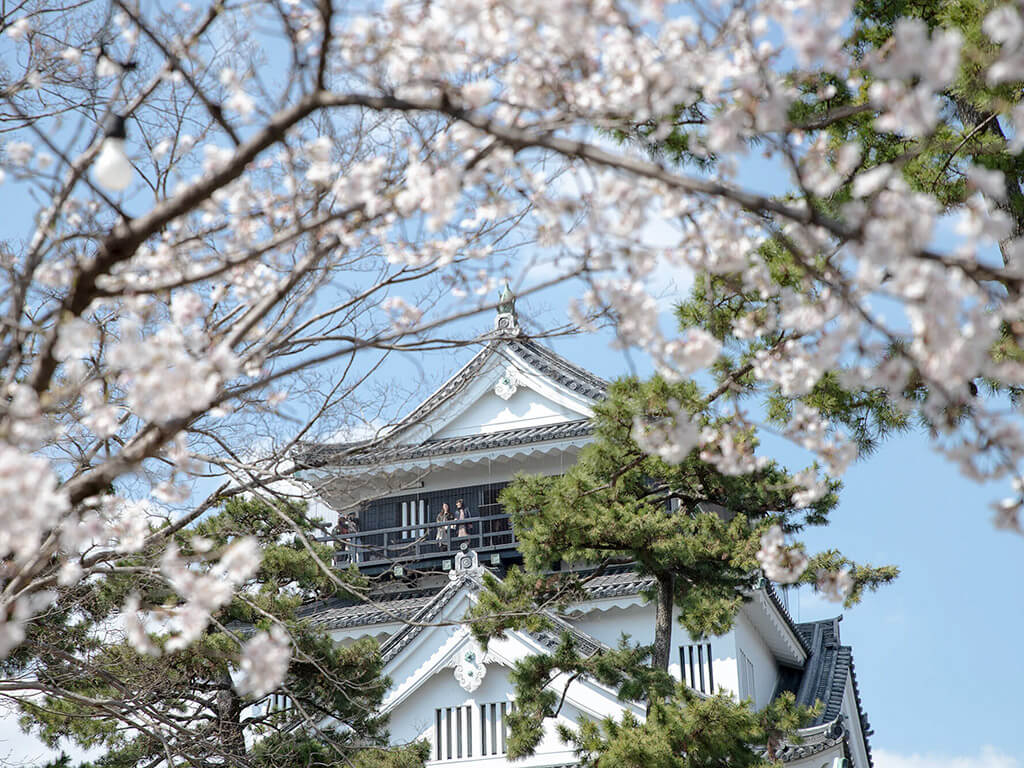
Okazaki Park, chosen as one of the 100 best places in Japan to see cherry blossoms, has around 800 cherry trees scattered throughout the park and around Okazaki Castle.
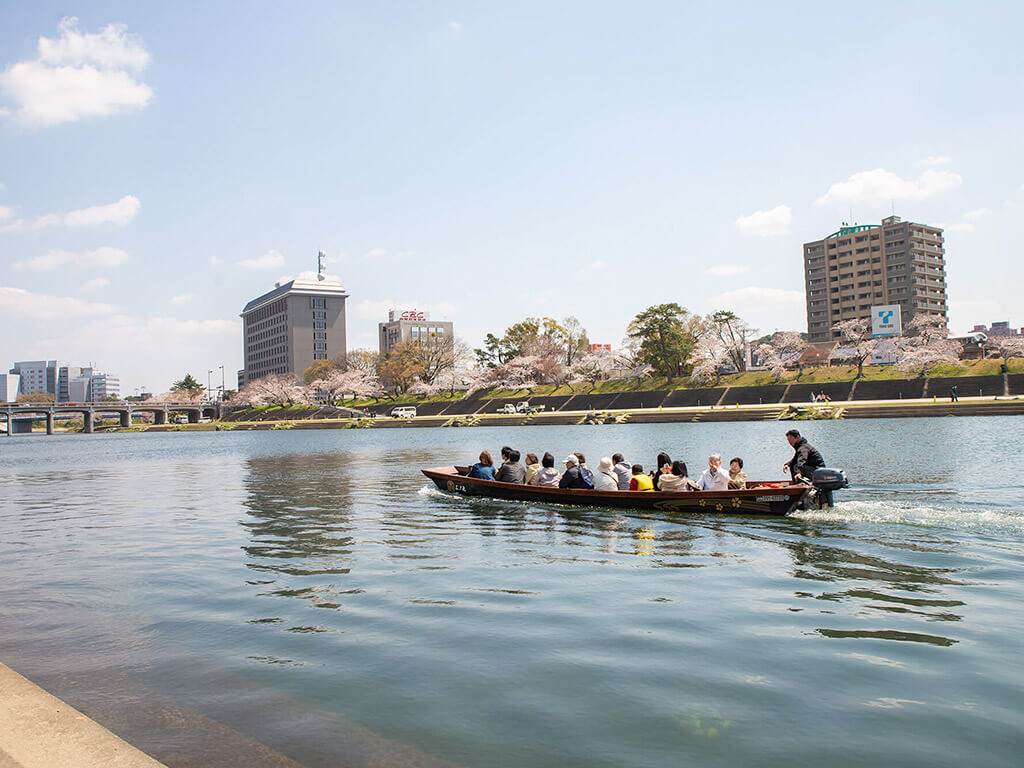
There is also a short boat cruise along the Otogawa River called Funa Asobi (30 minutes; adults 1,500 yen, middle school and younger 500 yen).
In addition to the festive atmosphere of the place during the Sakura festival, there are also many food stalls on the banks of the Otogawa River. For more information on Okazaki, check out our area guide here.
Okazaki Castle and Okazaki Park (岡崎城と岡崎公園)
Best Time: From the end of March to the beginning of April
Number of Sakura trees: 800 approx.
Light Up: March 26nd to April 6th, 2025; 18:00-21: 00
Entry Fee: Free
Opening Hours: Open 24 hours
Address: 561-1 Koseicho, Okazaki, Aichi 444-0052
Access: Take a Meitetsu line train to Higashi Okazaki station. From there take the north exit and the park is a 15-minute walk from the station.
Website | Google Maps
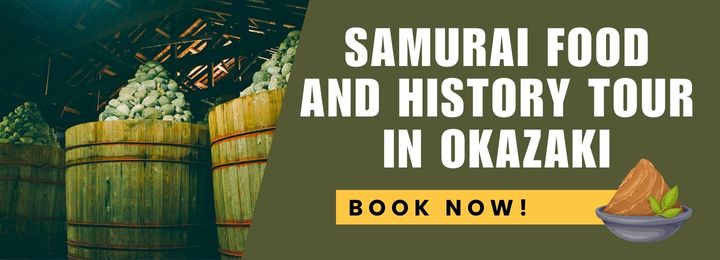
6. Okuyamada Shidare Sakura (Okazaki)
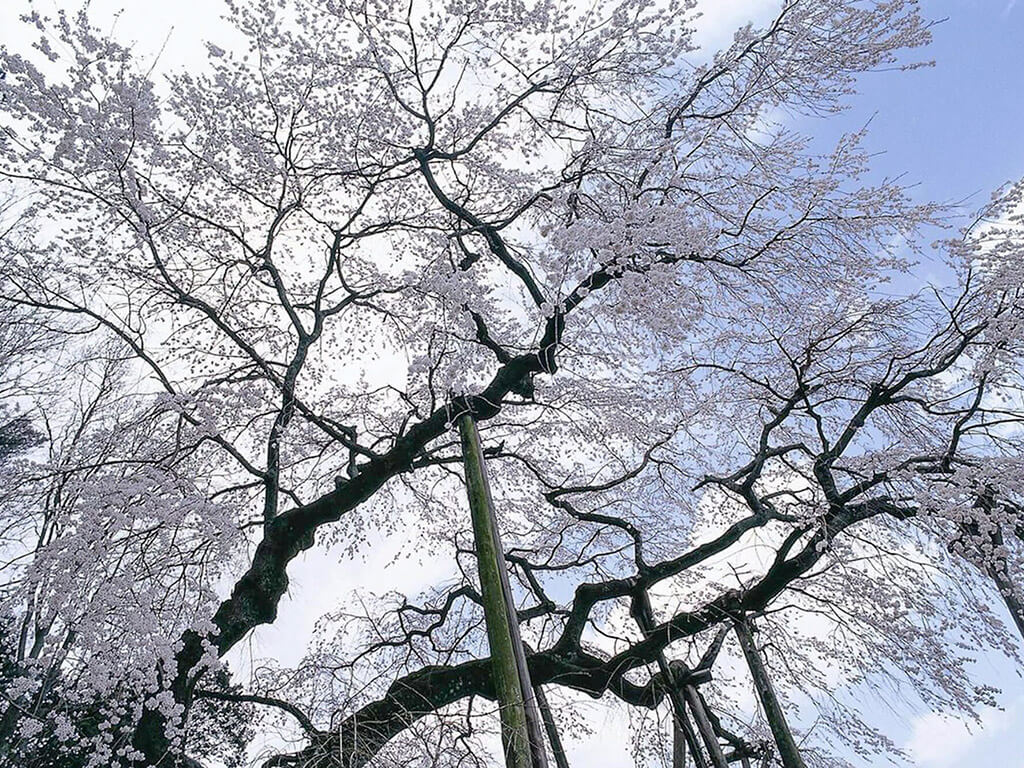
At over 1,300 years of age, this is the oldest cherry tree in the entire Aichi Prefecture. Standing 17 meters high, this wild cherry tree is a natural treasure of the city of Okazaki. You can enjoy its flowers both day and night. However, if you plan to use public transport, we recommend visiting during the day, as the bus service ends early.
Okuyamada Shidare Sakura (奥山田のしだれ桜)
Best Time: From the end of March to the beginning of April
Number of Sakura trees: 1
Light Up: Cancelled
Entry Fee: Free
Opening Hours: Open 24 hours
Address: 28 Okuyamadamachiya, Okazaki, Aichi 444-2142
Access: Take a Meitetsu line train to Higashi Okazaki station. At Higashi Okazaki station change to a Meitetsu bus in the direction of Otonojinya and get off at Hokutodaiguchi. From there it is about a 20-minute walk.
You can also take a Meitetsu bus in the direction of Otodenjinya and get off at 3-Gō Kōenmae. From there it is about a 10-minute walk.
Website (Japanese only) | Google Maps
7. Suigen Park (Toyota)
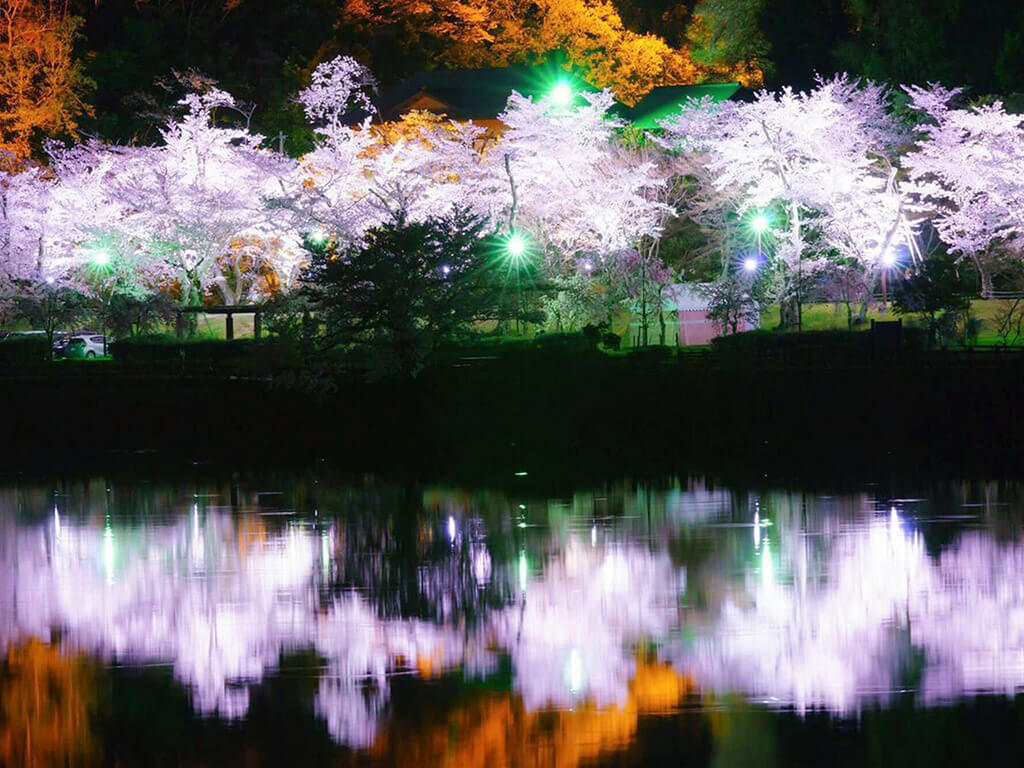
Suigen Park, which stretches along the Yahagi River, is one of the most famous places in the city of Toyota to see cherry blossoms. In the spring, the more than 450 cherry trees turn the whole area into a magnificent landscape of pink tones.
The bicycle route that goes from Suigen Park to the Toyota Arrows Bridge, Foresta Hills, and other places is highly recommended.
Suigen Park (水源公園)
Best Time: From the end of March to the beginning of April
Number of Sakura trees: 40 approx.
Light Up: March 24th to April 6th, 2024
Entry Fee: Free
Opening Hours: Open 24 hours
Address: Suigencho, Toyota, Aichi 471-0822
Access: Take the Tsurumai subway line to the Toyota station (the subway ends at Akaike station but most trains continue onto Toyota. If your train terminates at Akaike station, simply get off and wait on the same platform for the next train). At Toyota Station, take a bus and get off at Suigen Heiwa stop. From there it is a 10-minute walk.
Website | Google Maps
8. Sakurabuchi Park (Shinshiro)
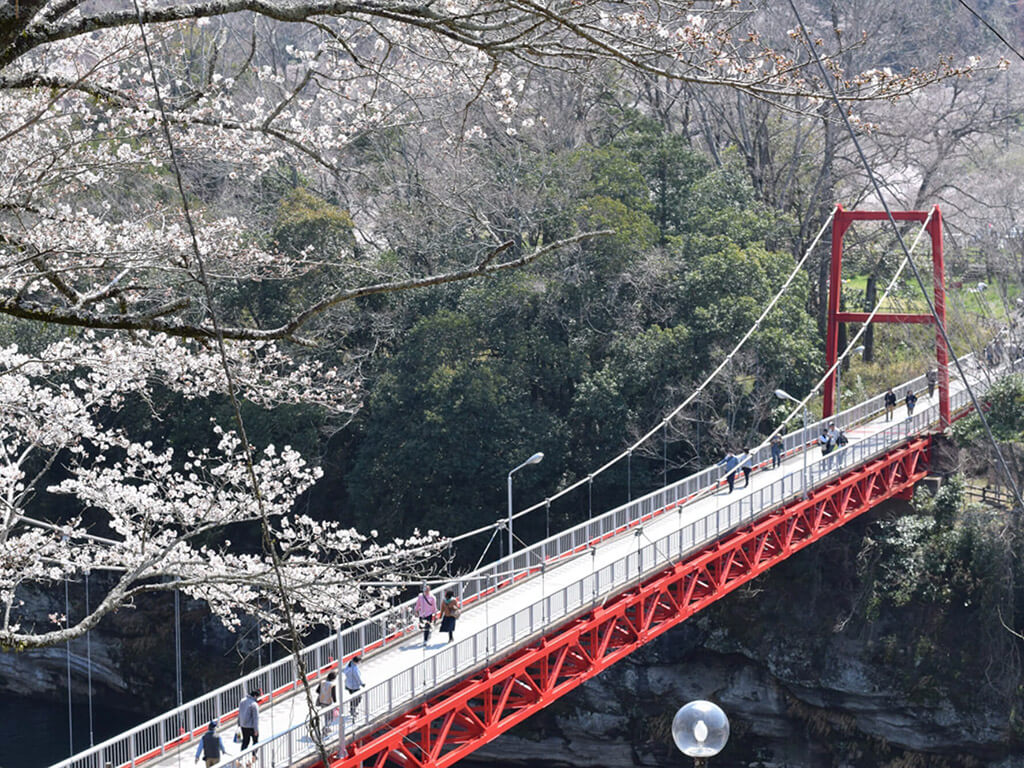
Sakurabuchi Park, designated as a Natural Park, takes its name from its avenues of cherry trees that line the banks of the Toyokawa River which meanders through the park. It is said that Sakurabuchi Park began with the planting of cherry trees along the Toyokawa River by the lord of the Shinshiro Castle during the Edo Period (early seventeenth century).
The contrast of the pink of the Sakura flowers and the emerald green of the vegetation along the river and the red bridges, make this a place with a captivating landscape.
Sakurabuchi Park (桜淵公園)
Best Time: From the end of March to the beginning of April
Number of Sakura trees: 2,000 approx.
Light Up: No
Entry Fee: Free
Opening Hours: Open 24 hours
Address: Yanaida Niwano, Shinshiro, Aichi 441-1331
Access: Take the JR line train to Toyohashi Station. There change trains to Higashi-Shinmachi station. From there it is a 15-minute walk.
Website (Japanese only) | Google Maps
This post was last updated in March 2025.
Although we strive to provide you with the most accurate and up-to-date information possible, please note that changes may occur nonetheless. We recommend you confirm any relevant information such as event cancelations or changes, opening hours, or possible restrictions using a direct source. Please keep in mind that these sources might be in Japanese only.
Did you enjoy this article?
Make sure to also check out our other posts about Nagoya and trust us if we say Nagoya is not boring!
Be sure to follow us on Facebook for regular updates on Nagoya, and see our Instagram for pictures and stories about the city!
Tag us 📲
If you have visited any of these cherry blossom spots in/around Nagoya or found a few other spots please share your experience and tag us on social media with #nagoyaisnotboring


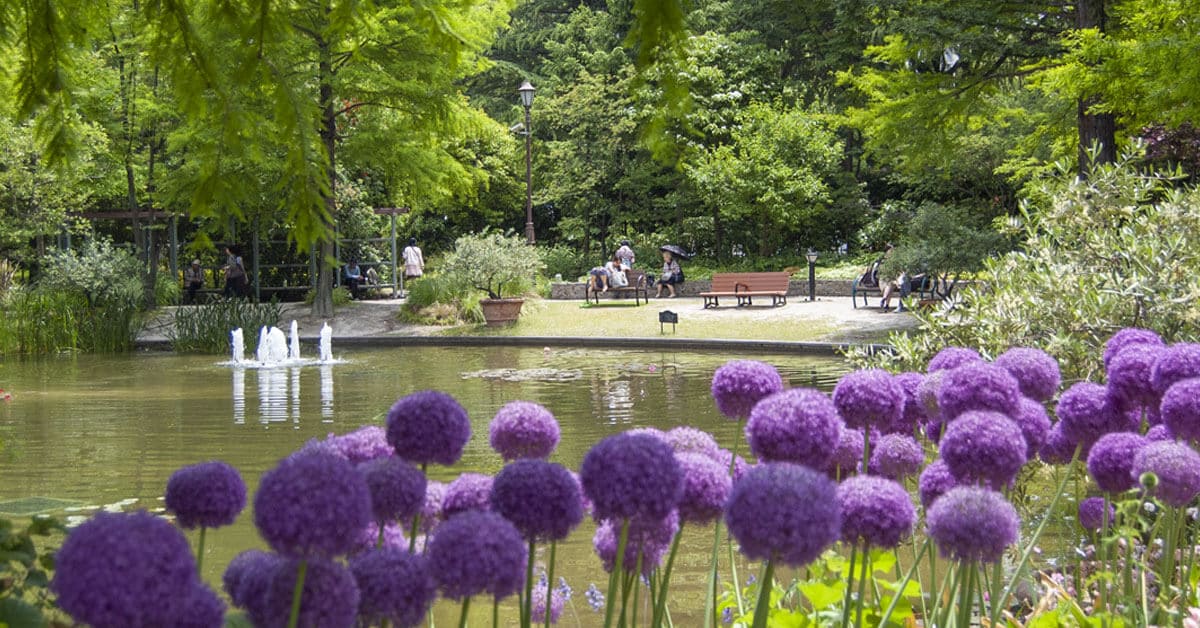

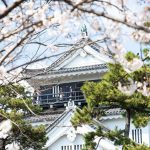
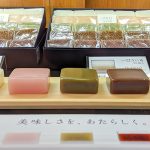
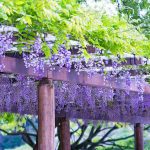
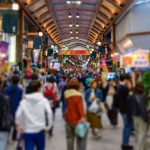
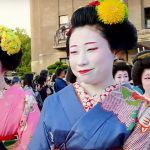

Amazing information